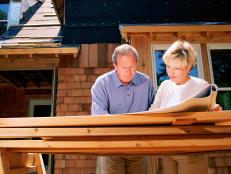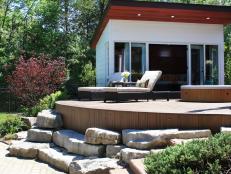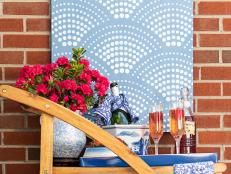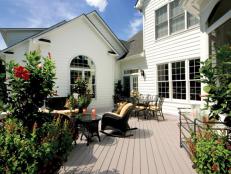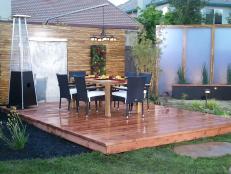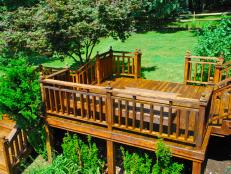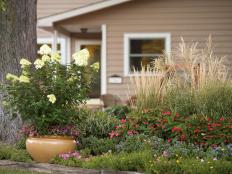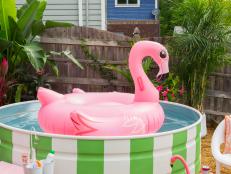Underdecks for Beginners


Photo courtesy of Southeastern Underdeck Systems, www.Southeasternunderdeck.com
For many homeowners, adding a deck to their house is similar to creating an outdoor living room. It’s a great recreational space for relaxing, cookouts, socializing with friends and other activities. And to get the most out of your new addition, you should consider installing an underdeck. This not only gives your new deck a professional, finished look but it also creates an additional area under the upper deck that you can utilize effectively.
Heath Bowman of Southeastern Underdeck Systems offers some expert tips and recommendations for those who are considering an underdeck system installation. “For most people,” he says, “that area down below is a dreaded space because it doesn’t get a lot of sun. You can get a lot of mold or mildew on the concrete below. An underdeck system is going to allow them to enjoy that space.”
Not only does an underdeck create a new outdoor living space for the homeowner which is more private and protected but it also serves to catch the water from rain and snow and route it away from the house and out into the yard.
When you hire a professional to install an underdeck system, it usually consists of these components - the trim, gutters and downspouts, the ceiling panels and support braces. In terms of the best underdeck materials, Bowman says “Aluminum is probably 90 percent of the market. And there’s some companies out there using vinyl.” A few may also use recycled metal or steel but rust is going to be a major concern if you use the latter material whereas aluminum is going to last forever.
The first phase of the install begins with determining the pitch of the space by setting up the laser levels. “That’s determined by the length from the house to the post as well as to the gutters,” Bowman states. “So if it’s under 300 square feet, we know we’re going to have one downspout. Anything over 300 square feet is going to take a secondary downspout.” Determining the correct pitch of the underdeck is mandatory for ensuring that any water flow is constantly moving and carrying any tree or leaf debris away.
The next step involves cutting the wooden end caps for the wall channel, installing them in-between the posts and then screwing the wall channel to the endcaps and house. You will then install the gutter just below the wooden end caps on the posts. Silicon sealant is then applied to the wooden end caps, the wall channel and the gutter to prevent possible water leaks. Bowman notes that “where you have problems with some of the systems out there - what we call track systems - is when the track is screwed to a joist. It’s a lot harder to find your pitch because you’re just putting spacers in and if you have [water] movement within the deck, you’re not able to evaluate that as effectively.” This could result in poor water routing or leakage.
The final step of the install is putting in the ceiling panels. “With our system, one panel overlaps the next,” Bowman explains. “If you don’t have accessories, the panels go in quite easy.” The panels from Southeastern Underdeck, for example, are constructed for easy removal if you need to access an area in the underdeck or decide to add accessories later such as lighting, fans or audio speakers.
In today’s market, there are a lot of customization features for homeowners who want an underdeck. Choices of trim, texture such as woodgrain or beadboard or design details such as arches and crown molding are available. Screen systems, swing mounts or recessed lighting are also easy add-ons. And there are usually a wide range of colors represented, everything from traditionally painted aluminum colors like Colonial blues and classic creams to woodgrain colors. Bowman has noticed a recent rise in the popularity of low voltage LED lighting for underdecks: “We’ve been able to educate people and show them the warm yellow look of LED now. They like the fact that DC LED is safer. It’s not line voltage; it’s 90 percent less heat, which is great because you’re not attracting bugs.”
There are DIY underdeck kits available for those who consider themselves expert handymen but one should be aware of some of the problems that could occur after the installation. “Most of the DIY stuff out there is going to be a track system,” Bowman advises, “and the problem with tracks is that any debris that gets in there is going to clog the underdeck system faster. Also, a lot of those DIY products don’t sell gutter systems and downspouts within their kit so that will be another issue, getting the rest of the pieces.”
The majority of homeowners, however, tend to favor a professional installation of their underdeck and once it is complete, they rarely have to do anything else except for occasional maintenance. Bowman recommends a periodic check for tree debris every three to five years. “You can pull a panel, take a look, see how much debris you have in there, then take your water hose, wash the panels down, flood the gutter, and that’s going to bring all of the debris over to your downspout.” Other than this, your new underdeck should provide you with a lifetime of enjoyment.








